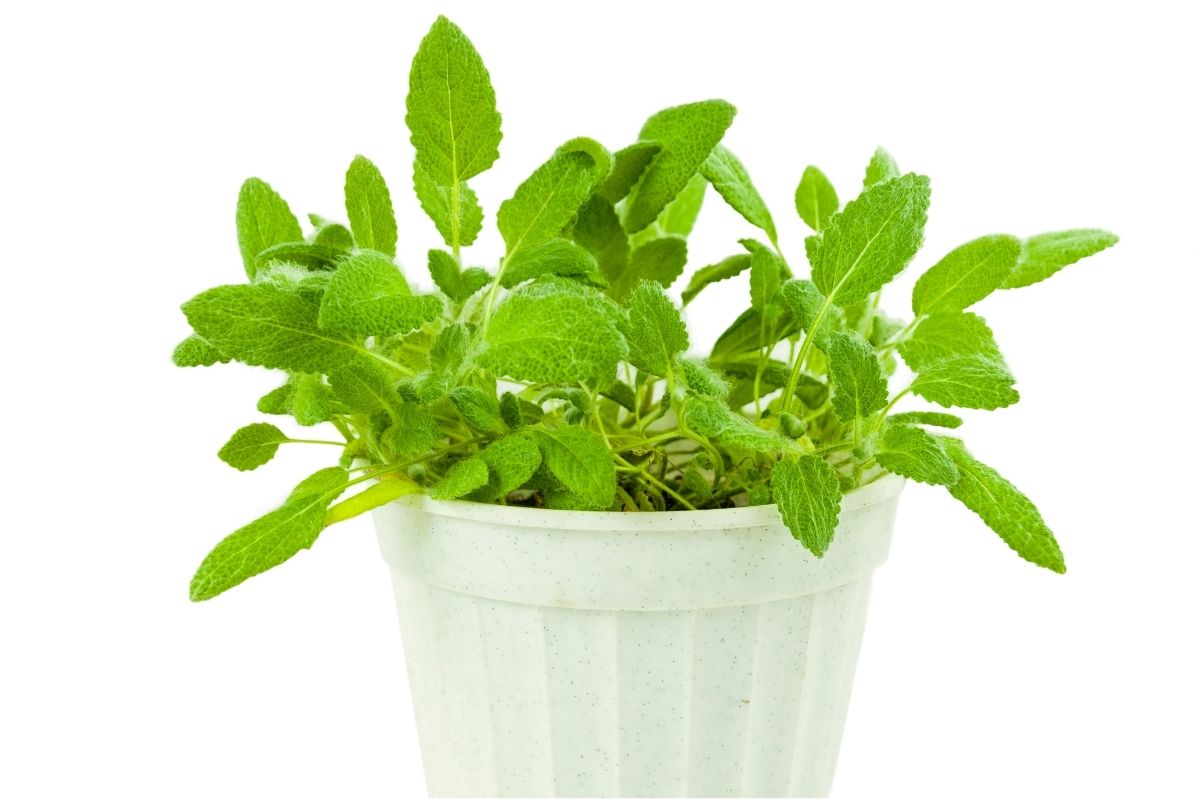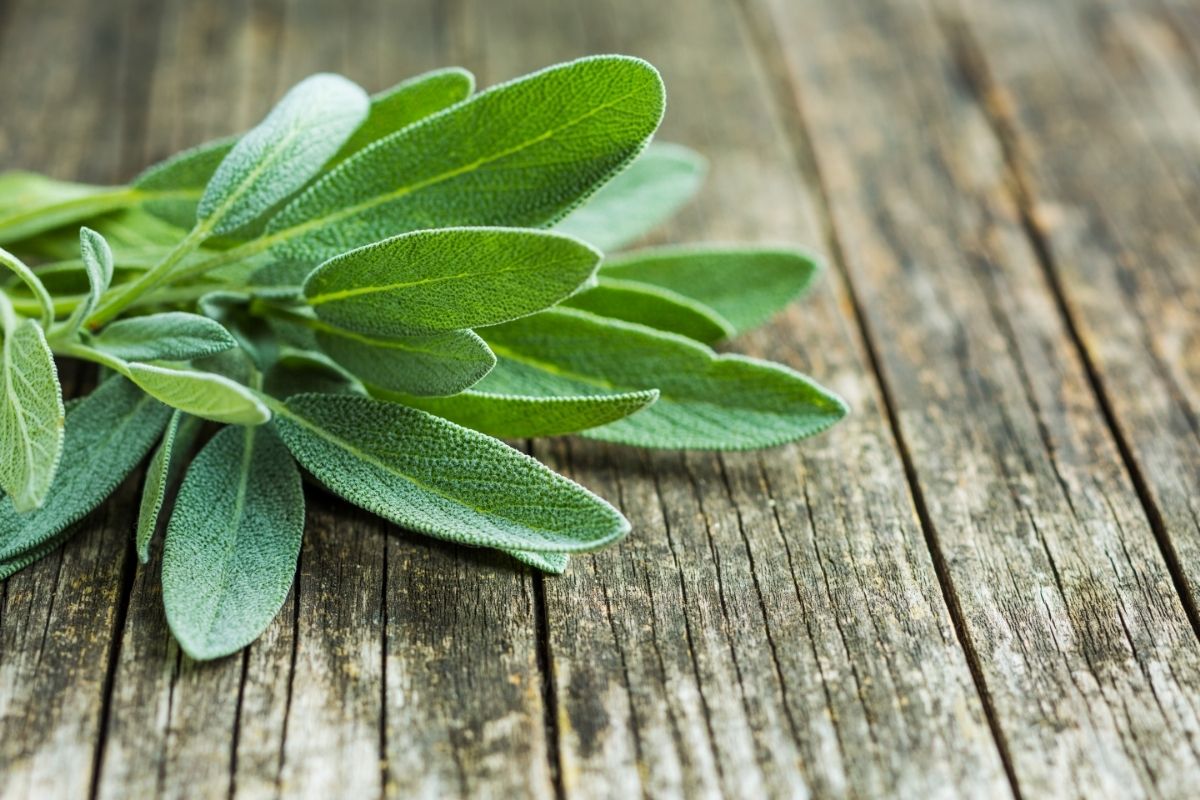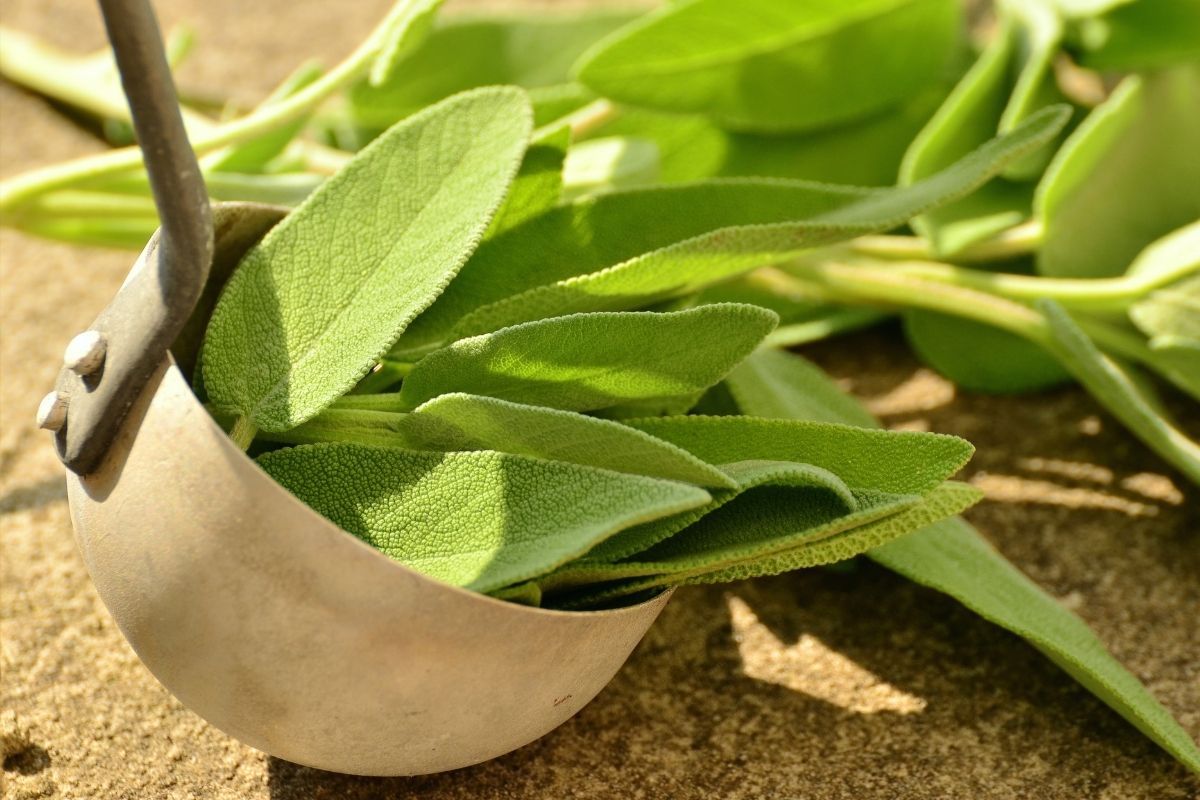What is Sage?
Are you wondering what sage is? Would you like to know how to grow sage indoors successfully? Sage is a perennial, evergreen subshrub with woody stems, grayish leaves, and blue to purplish flowers. It is a member of the mint family and native to the Mediterranean region.
It has a long history of medicinal and culinary use, and in modern times it has been used as an ornamental garden plant. Sage is popular in the kitchen and to those who know its medicinal value.
Sage plant is both aromatic and flavorful, and you can plant it with other herbs such as rosemary or basil. Some people believe that sage improves their memory and resolves stomach ailments. In addition to using sage for cooking, there are also some purely ornamental varieties.
The following are the most popular types of sage that you can plant:
- Berggarten sage
- Garden sage
- Golden sage
- Grape scented sage
- Mealycup sage
- Purple sage
- Pineapple sage
- Scarlet sage
- Tricolor garden sage
- White sage

Is Sage A Perennial?
Is sage perennial? Sage is both perennial and annual. It depends on the zone that you live in. If you live in planting zones 5-8, your sage will be perennial, growing year after year each spring. If you are in zones 9 and further south, your sage is likely to be annual, a one-year plant.
Why Should You Grow Sage?
Growing sage plants is very economical and time-saving. Its flavor is so intense that you only need a small amount to have it taste in your food. For Sage, the flavor increases as the leaves grow larger. The leaves also remain delicious even after flowering.
Sage is a herb that many people consider sturdy, hardy, prolific, and drought-tolerant. It grows well within a wide range of temperatures and planting zones. Sage also boasts a long growing season.
Sage can grow well in containers since it prefers well-drained soil. It is also not affected by pests. The only pest to worry about is mildew; however, you can avoid it by not overwatering your sage plant.
What Does Sage Look Like?
Sage is a medium-sized, hardy perennial herb. It grows about 2 feet (60 cm) tall. Its leaves are thick, rough, opposite, oblong, and pointed. They are 2 to 3-inches (5-7 cm) long. The stems are semi-woody and square. Sage color ranges from gray-green to whitish green, and some varieties are variegated.
How To Grow Sage Indoors
Would you like to know how to grow sage from seed? Then, follow the steps below for your sage to grow successfully.
- Buy sage seeds or a sage plant; depending on your preference, you can either plant fresh sage seeds or purchase a seedling and transplant it into your pot. If you already have other sage plants, you can use their cuttings to grow new sage plants.
- Prepare the soil; Sage grows successfully in rich and well-drained loamy soil. It prefers soil with a pH of 6.0 to 6.5.
- Plant the sage; After preparing the soil in your pot, you can now plant your sage seeds or seedlings.
- Water your sage; When the sage plants are small, you should water them to moist the soil. But when they reach maturity, you should use only water sage when the soil surrounding the plant is dry to the touch. Sage is very drought-tolerant.
- Provide adequate sunlight; Ideally, sage plants should grow in full sun, but when you grow them indoors, you should ensure that they get enough sunlight. Alternatively, you can use fluorescent lights. Standard fluorescent lamps should be 2-4 inches (5-8cm) above.
Where Does Sage Grow?
Sage is native to grassland and shrubland areas. It grows with well-drained soil and few shade trees. A few varieties even thrive in the desert. Like other garden plants, sage does best when it grows in conditions similar to its native environments.
Sage grows best in medium to full sun. However, it can also do well in containers or indoors if it gets enough sunlight.

How Long Does Sage Last?
Your sage can last for many years as long as you take good care of it, prune it and harvest it every season. Unfortunately, some sage plants get woodier over the years, and by the third year, they are no longer productive or flavorful.
To get many years of this herb, you need to cut back past the woody stems at the end of each growing season. You also need to learn tips on sage plant care.
When To Plant Sage
Many people do not know when to plant sage. You can plant sage seeds any time after the danger of frost is over. However, most people plant the seeds indoors 6 to 8 weeks before the last anticipated frost. At this time, the ground or the soil temperature should be 65°F (18.33 °C).
How To Cultivate Sage
The following are points to consider when cultivating sage indoors;
- Soil: Sage thrives in well-drained, sandy, loamy soil, and it prefers a pH between 6.0 and 7.0. You should avoid using too much fertilizer when planting your sage. Too much fertilizer may help it grow faster, but it will lose its flavor.
- Sun: Sage needs medium to full sun. If you are planting sage indoors, place your pot near a window that lets in enough sunlight.
- Water: Sage is a herb that can tolerate drought. You should therefore wait for the soil to dry before watering.
- Spacing: Sage needs enough spacing for it to grow well. The plants should be around 24-36 inches (60-91 cm) apart.
- Companion planting: Plant sage near carrots, strawberries, tomatoes, and cabbage, because the beautiful blossoms attract pollinators.
Does Sage Flower?
Sage is a popular shrub that many people grow for its leaves, which are strongly scented. In addition, Sage produces beautiful purple-blue flowers in summer. This makes it a very ornamental shrub that you can plant in containers.
How Tall Does Sage Grow
Sage is a hardy, rounded perennial plant that can grow 12 to 24 inches (30-60 cm) tall. Sometimes it can grow as large as 36 inches (91 cm) tall and wide. A few varieties may grow taller. In late spring, Sage stems become more prolonged, and the flower spikes. Other dwarf varieties of sage grow to 1 foot (30 cm) high and have smaller leaves.
How To Harvest Sage
You can harvest Sage herb plants on a need basis. It is advisable to harvest sage leaves in the morning when there is no dew. You can harvest sage quickly using the following steps;
- Pinch off leaves or snip off small sprigs from the plant.
- During the first year, harvest lightly to ensure that the plant grows fully.
- After the first year, be sure to leave a few stalks so that the plant can rejuvenate in the future.
- If fully established, one plant can be harvested up to three times in one season.
- Stop harvesting in the fall so the plant can prepare for winter.

A list of Italian Recipes to Make with Sage
Sage is a versatile herb that adds a unique flavor to many Italian dishes. The following are some dishes that require sage as an ingredient.
- Cheese and sage-stuffed chicken.
- Creamy pumpkin, sage, broccolini, and kale pasta.
- Pork and sage schnitzels with apple and fennel coleslaw.
- Peas braised in sage butter.
- Roast pork with chunky apple and sage sauce.
- Sweet potato mash with walnuts and crisp sage.
- Chicken, sage, and bacon pot pies.
- Pumpkin and goat’s cheese bruschetta with sage burnt butter.
- Polenta chips with pecorino and sage.
The Final Say
Growing sage in pots is a simple and exciting activity that you can engage in. This plant can be very beneficial in your kitchen. Growing a single sage herb plant will provide you with year-round foliage to flavor your recipes. So what are you waiting for? Plant sage today indoors with the help of this article.

Community of passionate writers and content creators who share a love for Italian heritage, culture, travel, food, and the Italian-American community. Our mission is to celebrate Italy’s rich history and traditions and connect with others who share the same passion.

